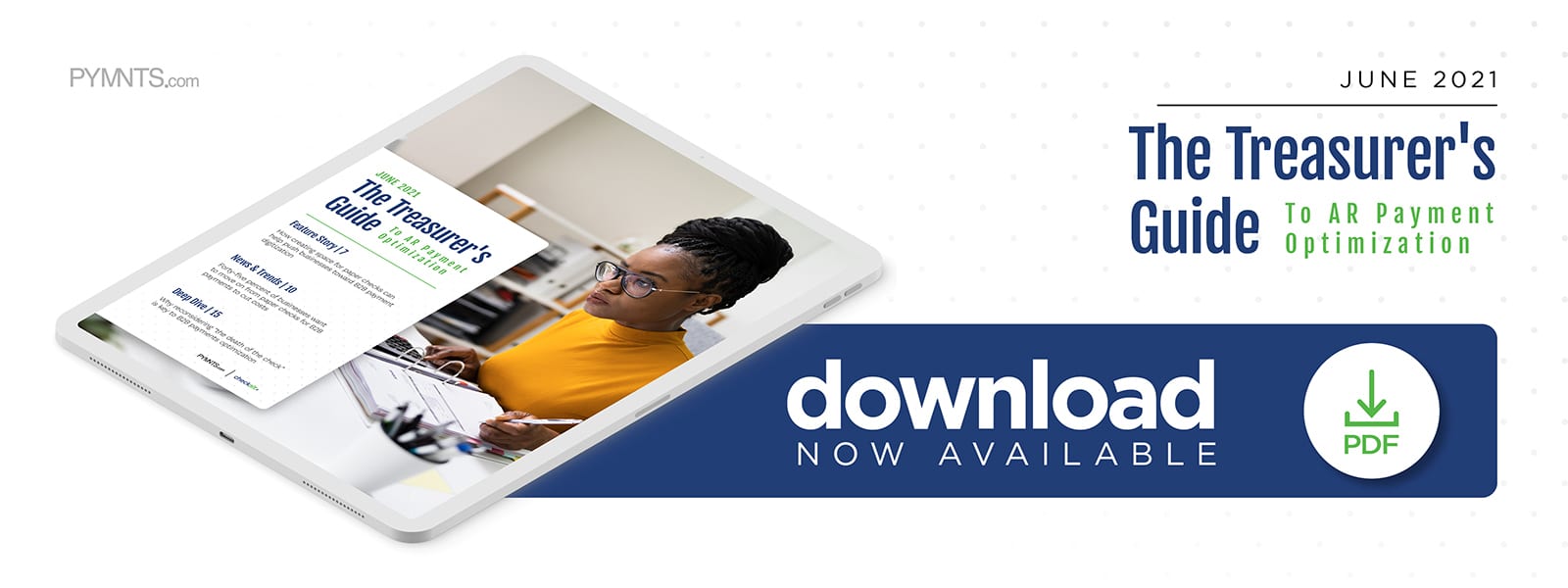How Creating Space For Paper Checks Can Help Push Businesses Toward B2B Payment Digitization

Companies are pushing hard to digitize their business-to-business (B2B) payments, but many of their partners still use paper checks. In the inaugural Treasurer’s Guide To AR Payment Optimization, Jim Gifas, head of Treasury and Payment Services for CIT Bank, explains why enabling multiple methods like remote check capture and ACH transfers are key to nudging digitization forward while keeping checks in play.
The past year’s events have prompted businesses to make digital shifts in their B2B payment processes, but that does not mean that all of them are prepared to entirely relinquish traditional methods, such as paper checks.
Smaller companies in particular may continue to cling to paper checks because their B2B payment systems are still optimized for these manual methods, Jim Gifas, head of Treasury and Payment Services for CIT Bank, explained in a PYMNTS interview.
“Paper payments continue to be widely used among small- to mid-sized vendors, largely because their systems are not usually set up to accept electronic payments,” he said. “Unfortunately, paper payments often mean higher processing costs and payment delays.”
Providing businesses with the tools or skills they need to upgrade to electronic B2B payment methods is therefore a priority for financial institutions (FIs). This requires setting the stage for these companies to accept ACH or other forms of electronic payment while leaving room for their trusted paper check methods.
Paper Checks’ Stickiness In A Digital-First B2B World
Businesses that are still reliant on paper checks for the bulk of their B2B payments were already at a disadvantage before the events of the past year made manual or in-person operations close to impossible. The rush to remote work driven by the global health crisis created more of an impetus for companies to reexamine manual processes, but it did not remove the challenges that have long kept these firms from making the digital switch in the first place. It can be especially difficult to persuade smaller firms to commit the money and time it takes to digitize their B2B payment processes if their suppliers remain unconvinced of electronic methods’ merits, for example.
“Overall, businesses are navigating a more dynamic and digitized environment and have had to shift their priorities and processes,” Gifas observed. “When it comes to upgrading B2B payment processes and moving to automating payments, our clients face challenges, like updating systems, training staff and supplier enablement. Enabling suppliers to accept electronic payments has been an ongoing challenge because many of their systems are not set up to accept these types of payments.”
FIs are thus forced to create solutions that allow for businesses’ continued use of paper checks while highlighting the benefits — and eventual necessity — of digitization for effective operations. CIT Bank tackled this conundrum by developing an online banking platform that supports a variety of integrated payment methods, including ACH as well as remote deposit capture. Offering this flexibility is an important way to keep businesses engaged as they relax their grip on paper checks. The bank is also moving to invest in other technology solutions as they emerge, including automation, which currently powers solutions such as the bank’s C-VendorPay product for digital business workflows, Gifas added.
“We stayed focused on delivering a more integrated set of banking solutions that drive value to our clients’ businesses, recognizing the challenging environment they were in,” he said. “Notably, over the last year, we continued our investment in technology solutions that enable our customers to manage their business digitally, automate processes and prevent fraud.”
Adding automation into businesses’ payables and receivables can help firms gain back the time and funds they need to keep pace with a digital-first, B2B payment environment. It is also imperative for FIs to earn the trust of their partner businesses if such technologies are to oust the enduring paper check, however. This makes robust and readily apparent fraud prevention especially essential.
Confronting Fraud
Businesses that are only just now becoming convinced of electronic payments’ advantages over those of their favored paper checks may need significant reassurance from their banking providers or other payment service partners to begin this transformation. This means finding digital-first B2B payment solutions that are not only swift but also secure.
“In addition to providing technology solutions that automate and digitize the payments process, we remain focused on fraud prevention and reducing risk,” Gifas said. “With fraud on the rise with the pandemic, we work to educate and train our clients on how to reduce risk with payments.”
The shift toward remote working and operations is likely here to stay, making it critical for businesses to send and receive B2B payments smoothly via digital channels. Tailoring traditional business processes to fit this expanding virtual world is a crucial first step to remaining successful, and companies and their financial partners must adjust accordingly.

